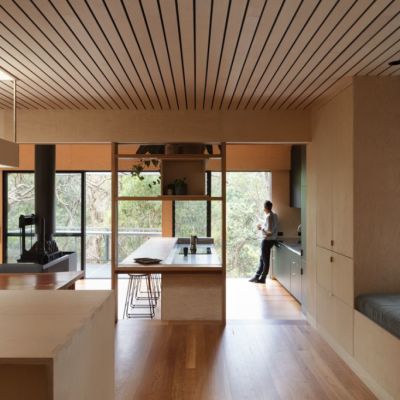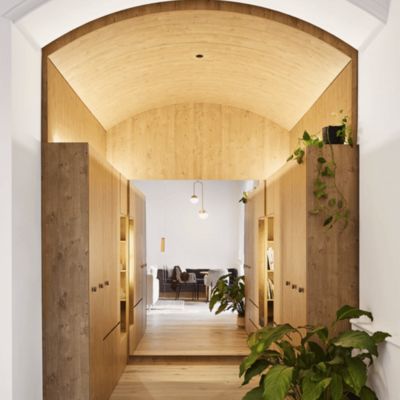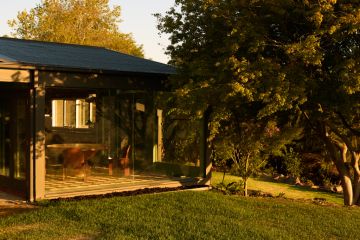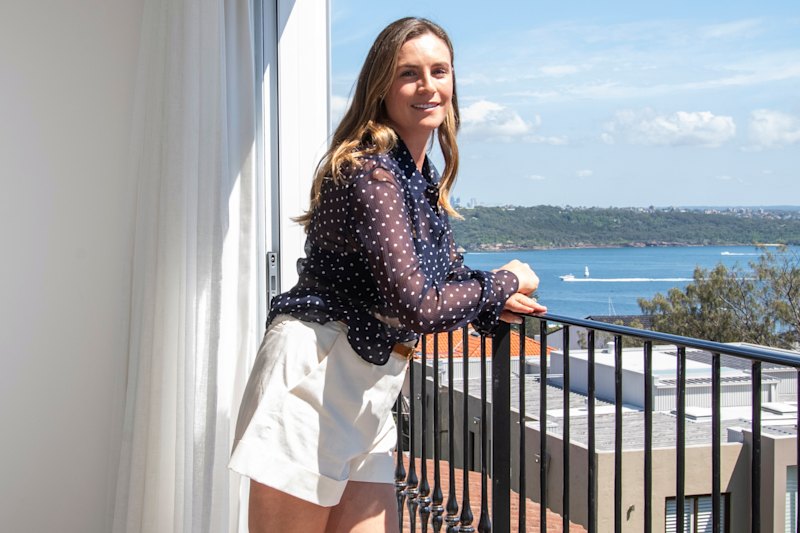Industrial designer Adam Goodrum launches new breeze block collection
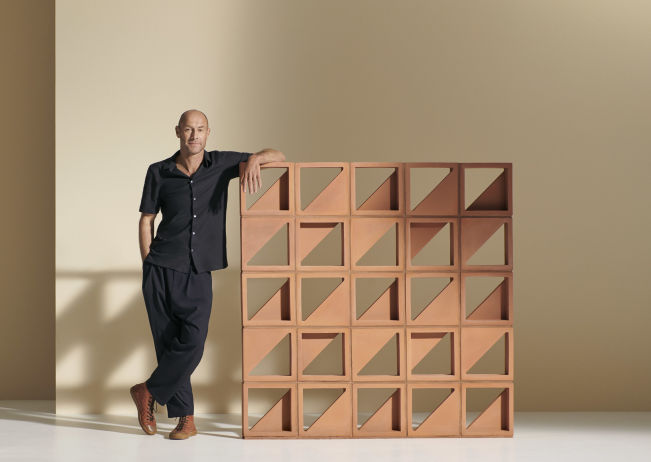
Industrial designer Adam Goodrum is usually creating new products for the furniture world – mostly dining tables, side tables, chairs and stools – but has stepped out of his comfort zone to design a new range of a much-loved building material.
Goodrum teamed up with concrete block and brick manufacturing company Brickworks to design and produce Kite Breeze, a fresh take on the humble breeze block.
“There’s been a bit of a breeze block revival and they [Brickworks] were wanting to do something a little bit different, hopefully, to what was already out there,” Goodrum says of the collaboration.
The designer’s fascination with geometry, pattern and puzzles was the inspiration for the Australian-designed, Italian-made blocks that come in three colours – white, dune and terracotta – a nod to his coastal upbringing.
“Growing up in coastal WA, I was surrounded by houses of the ’50s and ’60s where breeze blocks were a prominent feature. And so, I’ve always associated them with our quintessential indoor-outdoor Australian lifestyle.”
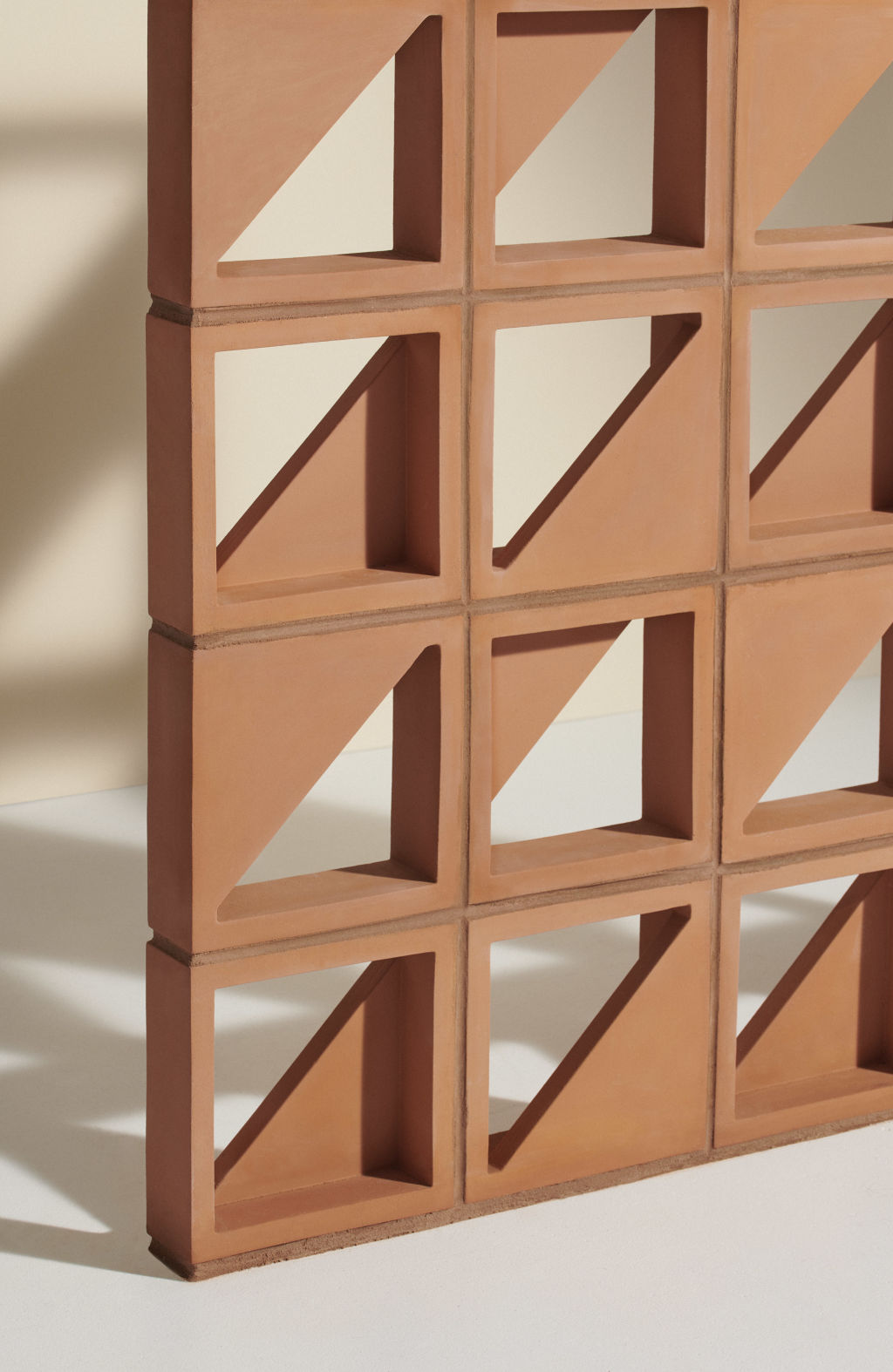
In a process that’s taken about two years from concept to creation, Goodrum’s product differs from the standard block in that it doesn’t have the one symmetrical shape that makes up the whole block, but a half-inset panel that offers multiple pattern configurations, shadows and airflow.
The seemingly simple design allows a single block to have up to eight orientations, which creates “endless possibilities for variation in pattern,” Goodrum says. “It’s really exciting how many different things you can do.
“They become a constantly changing sculpture through their interplay with light, shadow and surface. Kite is a deliberate attempt to capture this expression while facilitating light and natural ventilation.
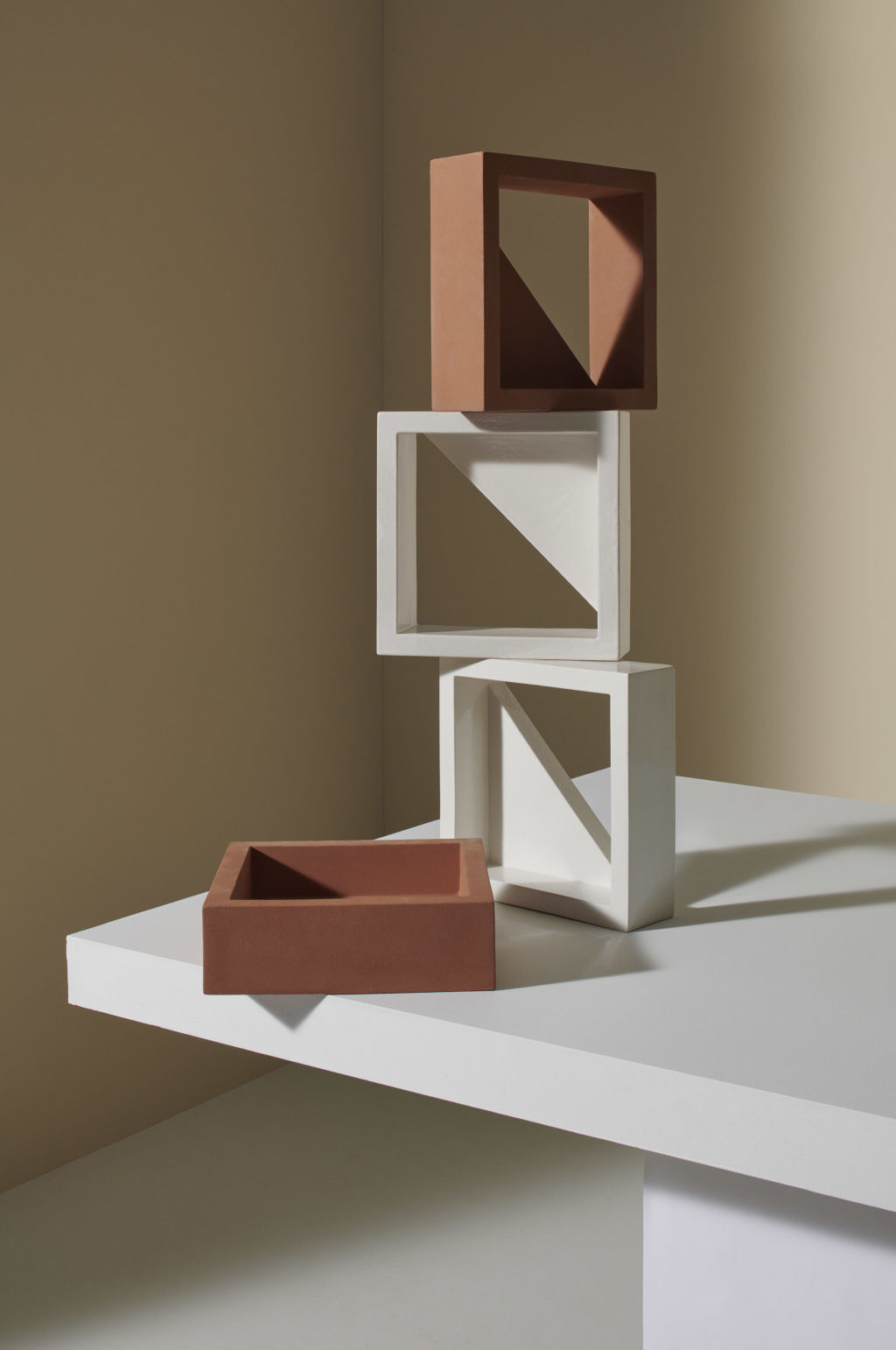
“I’ve tried to capture the functional aspects of the breeze block. It’s a naturally ventilating building brick that allows security and privacy. It’s decorative and sculptural while still being functional. And it has versatility – providing unlimited patterns and combinations to explore and play with.”
An iconic hallmark of 1950s and ’60s modernist architecture, breeze blocks have again surged in popularity in recent years as more architects and designers continue to feature them in both residential and commercial projects. But for Goodrum, they’ll always be timeless.
“They’re a bit like flares – they popped up and went away, and they’ve come back again … but for me, they feel really timeless. The simple geometry I think has a really timeless aspect to it,” he says.
Architect Sam Marshall doesn’t see it as a trend that will be going anywhere anytime soon and credits firms such as Edition Office and Herzog and de Meuron for taking the breeze block and making it fashionable again.
“These were key architects who have seen something sitting on the shelves not being used, and they’ve found a way of using it in a contemporary fashion, not in a mid-century modern way.”
Marshall is somewhat of a breeze block fanatic. He started the Instagram account @breezeblockhead, which now boasts over 17,000 followers, and posts images of breeze blocks in situ from around the country and the world. He has even written a book about the concrete building block.
Since building his breeze block community, Marshall says that the blocks are being “given the respect they used to have”.
“A number of people have said to me that now they see breeze blocks differently. People are actively looking for them, and new uses of them,” he says.
“I’m fascinated that people can keep reinventing the wheel [with breeze blocks].”
Goodrum notes the Kite Breeze blocks can be used in larger applications as either internal or external walls, but also something as small as a feature console wall for an outdoor barbecue, and is looking forward to seeing how architects and designers use the product.
“We’ve only just launched them, and I’ve had a number of different architects saying how much they want to use them.
“I’d like to think I’ve done something that hasn’t been done [before], in regards to the opportunity for many different patterns from one brick,” Goodrum says.
We recommend
States
Capital Cities
Capital Cities - Rentals
Popular Areas
Allhomes
More
